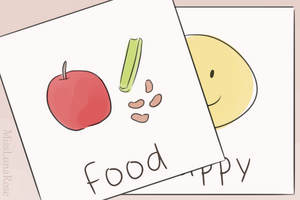(new) |
Tag: sourceedit |
||
| (15 intermediate revisions by 6 users not shown) | |||
| Line 1: | Line 1: | ||
| + | [[File:PECS cards illustrated by MissLunaRose.png|thumb|300x300px|Sample PECS cards illustrated by autistic artist Miss Luna Rose]] |
||
| − | '''Picture Exchange Communication System''' (PECS), developed at Delaware Autistic Program, assists ''"children and adults with ASD to acquire functional communication skills."'' <ref> |
+ | '''Picture Exchange Communication System''' (PECS), developed at Delaware Autistic Program in 1985, assists ''"children and adults with ASD to acquire functional communication skills."'' <ref>Autism Society of America - Learning approaches [http://www.autism-society.org/site/PageServer?pagename=about_treatment_learning#PECS]</ref> It is a form of [[:Category:AAC|augmentative and alternative communication]] (AAC). |
| + | |||
| + | PECS is useful for communicating basic needs, wants, and other simple ideas. It consists of a series of picture cards, which may be kept in a binder or another storage place. The autistic person hands a card to another person to represent what they want to say (for example, a card with a picture of a book if they want you to read to them). |
||
| + | |||
| + | Picture cards should be kept in an easily accessible location, so the autistic person can get them at any time. |
||
| + | |||
| + | == Limitations == |
||
| + | PECS can only communicate simple concepts. This may work well for a two-year-old, but a ten-year-old or adult probably has more to say. |
||
| + | |||
| + | A nonverbal or partially verbal autistic person would benefit from other forms of AAC, such as [[typing]] or [[Sign Language|sign language]]. |
||
==References== |
==References== |
||
| − | <references/> |
+ | {{Small|<references/>}} |
| + | |||
| + | ==External links== |
||
| + | * [http://web.archive.org/web/20080726221901/http://www.associatedcontent.com/article/41228/free_well_almost_free_picture_cards.html Free! (Well, Almost Free) Picture Cards for Autistic Children - Sheila Webster-Heard] |
||
| + | * [http://www.speechteach.co.uk/p_resource/speech/picture_cards.htm Speech Teach UK - Speech Therapy - Picture Cards] |
||
| + | * [http://www.do2learn.org/picturecards/printcards/index.htm Do2Learn - Educational resources for special needs] |
||
| + | * [http://www.members.tripod.com/trainland/pecs.htm Links to PECS images (trainland) ] |
||
| + | * [http://www.auzenne.net/aut_wikia/pecs/ All of above trainland PECS images] rolled up into one page. Is about 56 pages when printed. Your browser needs to understand iframes for this to work. |
||
| + | * [http://www.bellaonline.com/articles/art45166.asp Picture Schedule Samples] |
||
| + | * [http://www.usevisualstrategies.com Picture Schedules] |
||
| + | * [http://www.quia.com/pages/havefun.html Speech Therapists site - Picture Schedules, Speech games, much more. ] |
||
| + | * [http://www.ideallives.com/v01/pecs.html PECS Resources] |
||
| + | * [http://www.bbbautism.com/pecs_contents.htm Detailed phases of PECS ] |
||
[[Category:Interventions]] |
[[Category:Interventions]] |
||
| + | [[Category:AAC]] |
||
Latest revision as of 12:44, 3 April 2017

Sample PECS cards illustrated by autistic artist Miss Luna Rose
Picture Exchange Communication System (PECS), developed at Delaware Autistic Program in 1985, assists "children and adults with ASD to acquire functional communication skills." [1] It is a form of augmentative and alternative communication (AAC).
PECS is useful for communicating basic needs, wants, and other simple ideas. It consists of a series of picture cards, which may be kept in a binder or another storage place. The autistic person hands a card to another person to represent what they want to say (for example, a card with a picture of a book if they want you to read to them).
Picture cards should be kept in an easily accessible location, so the autistic person can get them at any time.
Limitations
PECS can only communicate simple concepts. This may work well for a two-year-old, but a ten-year-old or adult probably has more to say.
A nonverbal or partially verbal autistic person would benefit from other forms of AAC, such as typing or sign language.
References
External links
- Free! (Well, Almost Free) Picture Cards for Autistic Children - Sheila Webster-Heard
- Speech Teach UK - Speech Therapy - Picture Cards
- Do2Learn - Educational resources for special needs
- Links to PECS images (trainland)
- All of above trainland PECS images rolled up into one page. Is about 56 pages when printed. Your browser needs to understand iframes for this to work.
- Picture Schedule Samples
- Picture Schedules
- Speech Therapists site - Picture Schedules, Speech games, much more.
- PECS Resources
- Detailed phases of PECS
